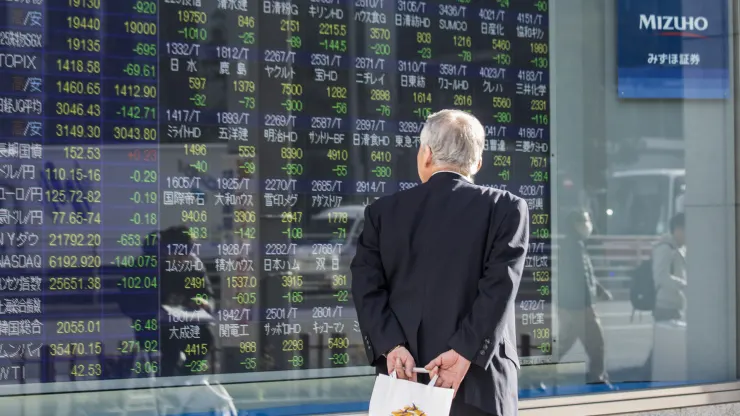Japan’s stock markets hit an eight-month low on Friday, as they declined for two straight days after the Bank of Japan raised benchmark interest rates to their highest level since 2008.
The Nikkei 225 tumbled 5.81% to end at 35,909.7, marking its worst day since March 2020, according to Factset data, and dropping below 36,000 mark for the first time since January.
The broader Topix saw a larger loss of 6.14%, marking its worst day in eight years and closing at 2,537.6.
This is a vastly different picture from less than a month ago, when the Nikkei hit an all-time closing high of 42,224.02 on July 11.
Speaking to CNBC’s “Squawk Box Asia,” Bruce Kirk, chief Japan equity strategist at Goldman Sachs said that the Japanese market rally had reached a “transitional phase.”
“So yes, it’s very painful. Yes, there’s a fundamental shift taking place in the market, but it’s not unusual,” Kirk said. “We don’t think the [rally] story is broken, but the narrative is definitely evolving, and that’s likely to be accompanied by the continued volatility and this quite aggressive sector rotation that we’re seeing.”
Kirk explained that the rally over the past two years was powered by three factors, namely, yen weakness benefiting blue-chip exporters and banks, expectations of monetary policy normalization, and corporate governance reform.
Japan’s markets were Asia’s top performers last year and until June this year.
“The rules of the game have [now] definitely changed, particularly around rates and FX,” Kirk said, adding investors are now reassessing sector positioning in the market.
There’s a silver lining in this repositioning.
Kirk told CNBC that there’s investor interest for the first time in about three years in Japan’s small- and mid-cap companies due to various factors, including their higher exposure to domestic demand and reduced vulnerability to foreign exchange fluctuations.
“I think people are now looking for areas that are more domestic demand focused, and that’s really putting the interest back on Japan’s small [and] mid-caps.”
Everyone’s on the same boat
Kirk detailed two possible reasons behind the current reassessment following the BOJ’s rate hike.
The first is that “investors don’t believe that the Japanese economy can take a 25 or a 50 [basis points] policy rate [hike], and that they don’t think Japanese corporates can make any money with the yen below 150 [against the dollar].”
The yen currently trades at 149.4 against the greenback, having dipped below the 150 level against the dollar since the BOJ decision on Wednesday.
The other reason for the sell-off could be due to a very crowded market, where investors have sunk money into a narrow group of companies, all of which have had momentum for an extended period.
“Everybody’s on the same side of the boat when some of the fundamentals change. That’s [when] you do see these very aggressive pullbacks and reversals.”
So, how long and sharp will be this pullback?
Kirk noted that over the last two years, the market has seen about seven “momentum pullbacks,” dropping about 7% to 8% from peak to trough, and the market usually took about two months to recover from them.
He said that the current price action was very similar to what the market saw in December 2022, when the BOJ modified its yield curve control policy.
The central bank eventually abandoned its YCC policy in March.

